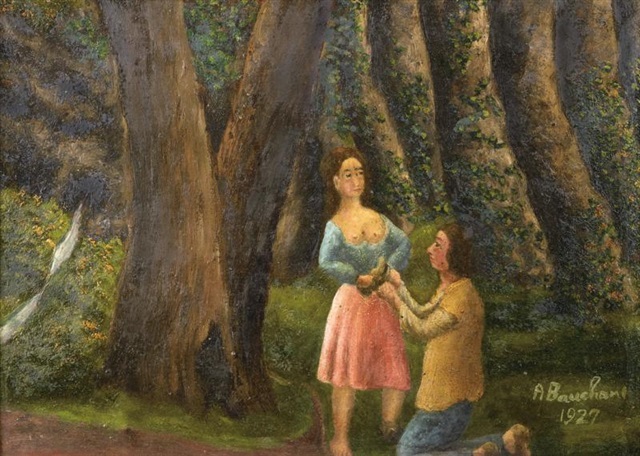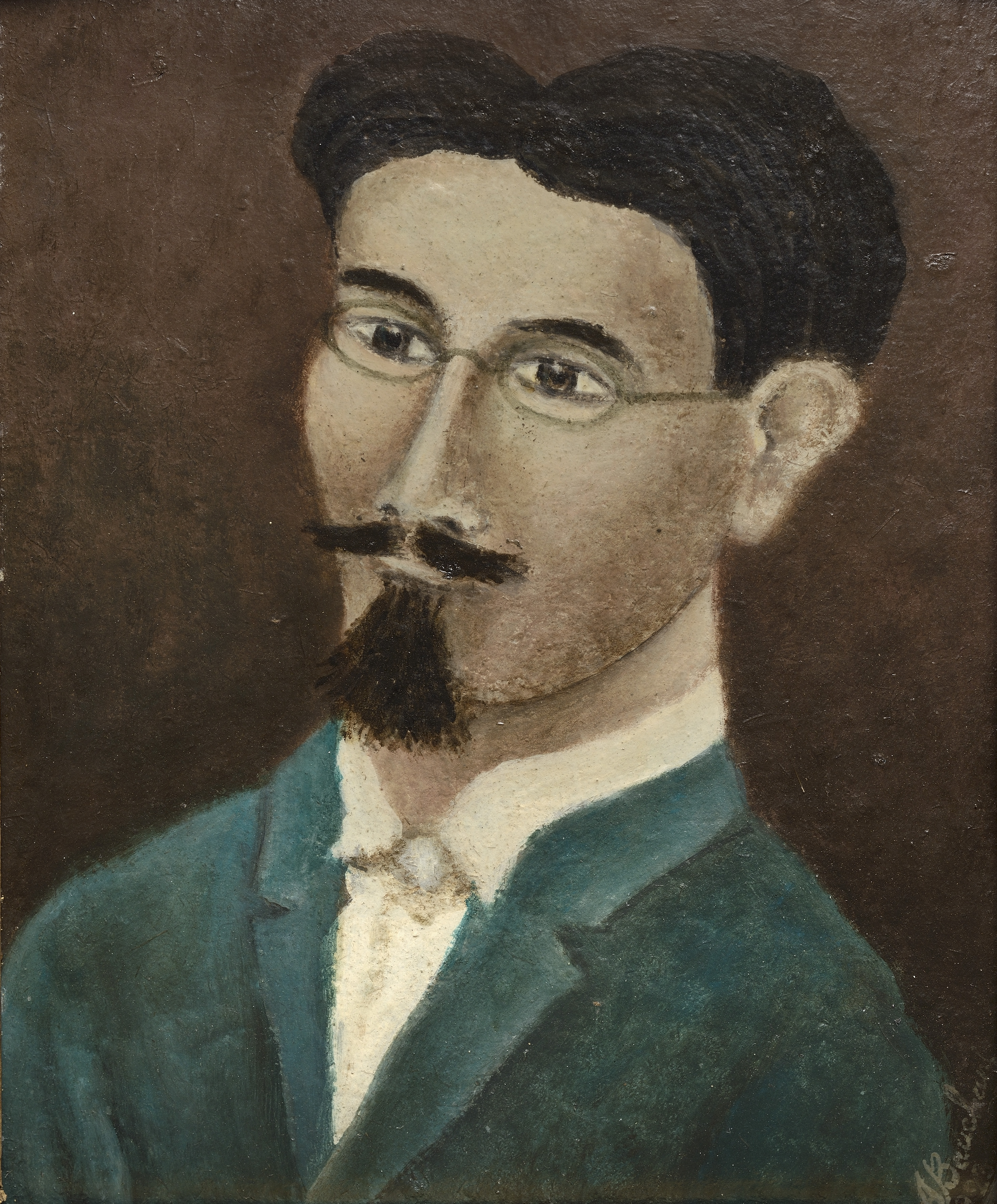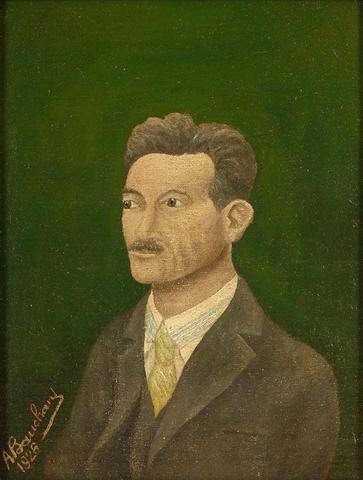André Bauchant
|||||||||||
(Château-Renault, 1873 – Montoir-sur-le-Loir, 1958)
André Bauchant spent his entire life in his native Touraine. He left school at the age of fourteen to work the land on the family farm. He later became a breeder, tree merchant and nurseryman, which gave him the nickname of “garden painter”.
During the war, he, who had never visited a museum or held a pencil or brush, was given the task of drawing up field surveys and panoramic sketches. This was the revelation of a talent he did not know he had: “I drew the horizons with the same ease as writing a letter.
Demobilised in 1919 at the age of 46, he found his wife deprived of her mind and his horticultural farm fallow. He then retired to the woods with his wife, whom he released from the asylum, and began to paint. These were ten difficult years during which Bauchant painted in the morning and cultivated a few acres of land in the afternoon. The result was paintings full of serenity and history, in which a sort of Eden on the banks of the Loire unfolds, populated by small colourful characters, mixing the grotesque and the sublime.
He exhibited at the Salon d’Automne in 1921, and was gradually supported by a circle of Parisian artists and personalities, including: Le Corbusier (who bought his first canvas in 1922), Ozenfant, Lipchitz, Serge Lifar, Jean Lurçat, Diaghiliev, and Jeanne Bucher, who organised his first solo exhibitions in 1927 and 1928, where Wilhelm Uhde met him and associated him with the “modern primitives”.
In 1928, Bauchant was commissioned to create the sets for the Apollon Musagète for Diaghiliev’s “Ballets Russes” with music by Stravinsky, an opera that was performed in June 1928 at the Sarah-Bernhardt Theatre.
This was the beginning of recognition and the end of the difficult years. Exhibitions multiplied throughout the world, and he was able to live from his painting. He then had a house built in Tourneboeuf and achieved happiness. In 1949, he even had a retrospective exhibition of 215 paintings at the Charpentier Gallery.
During the last years of his life, Bauchant painted mainly flowers and carried out a state commission, a tapestry cardboard woven at Gobelins. But plagued by illness, he fell victim to a cerebral congestion that left him debilitated in December 1956. He continued to paint until 30 September 1957, holding his right wrist with his left hand. He died less than a year later, on 12 August 1958.
André Bauchant is associated with the so-called “naive” painters, whom Wilhelm Uhde liked to call “painters of the sacred heart”. They are all painters who have returned to the sincerity, truth and inventiveness of the “imagiers” who had freely developed their expression until a court and then mass culture imposed itself.
He was a self-taught painter, who in his own way destroyed the prejudice of clumsiness, and challenged the pictorial tradition that had dominated since the Renaissance. As Dina Vierny, who devoted a great deal of her life to defending his work and that of the other naïfs, put it so well, “they are first and foremost artists in their own right who are reviving the great art of the Middle Ages, who prefer the realm of instinct to the world of knowledge”. Perpetuating the great tradition of French art, from Gothic art to Corot and Poussin, Bauchant fascinated his contemporaries because he brought to the art of his time a freshness forgotten by trained painters, going against the grain of modern art’s formalist history. As Le Corbusier said, “Bauchant, a painter-poet, because he has no aesthetic preoccupation, no scruples, and that naivety which allows him to dare everything, gets by wonderfully, with a craftsman’s skill that is too often lacking in artists of the intellectual classes. It is easy to understand why Wilhelm Uhde called these painters “modern primitives”.
Dina Vierny organised numerous exhibitions of Bauchant’s work at the gallery and eventually purchased his studio collection (at his request). In 1997 she published his catalogue raisonné.
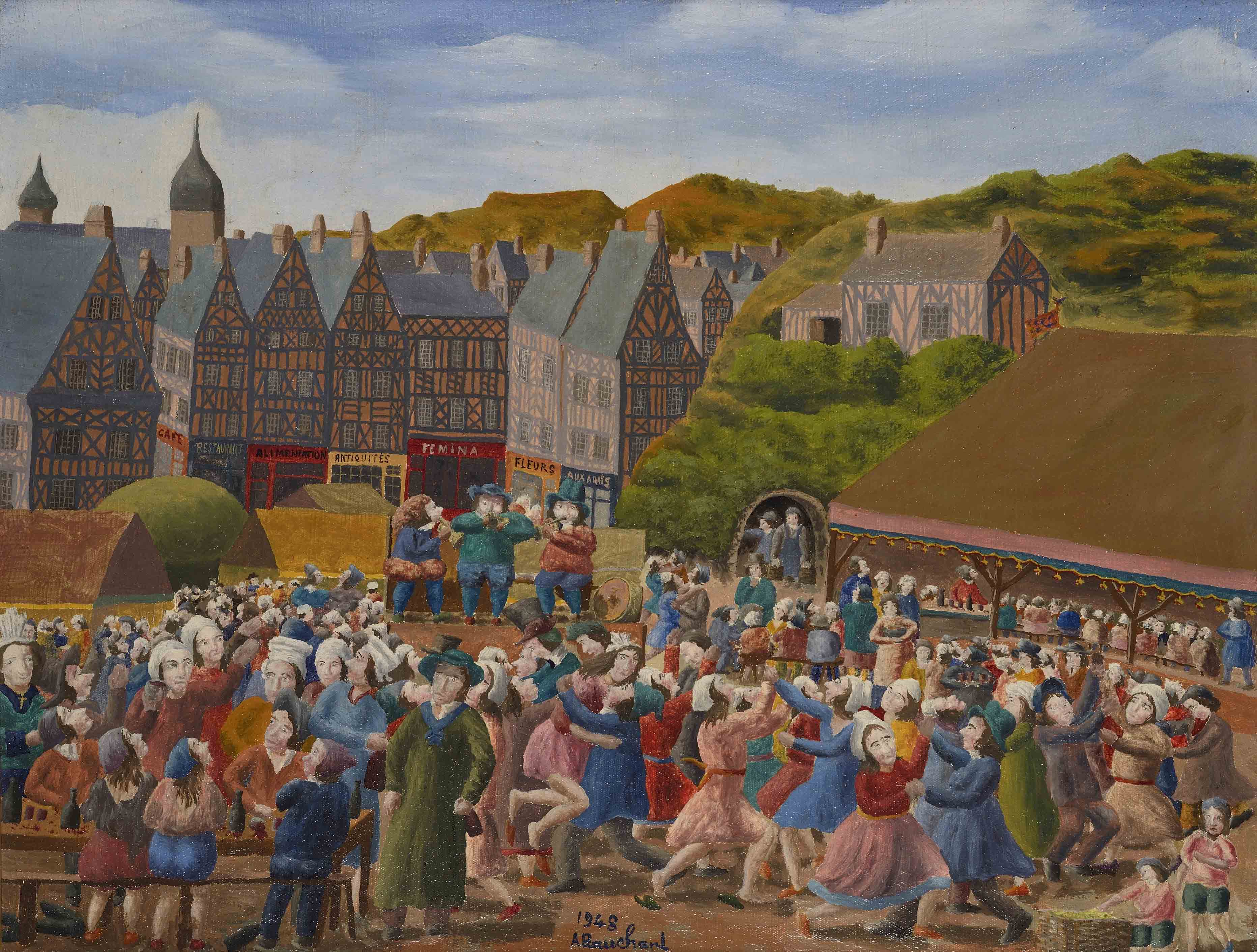
Festival du village, 1948
Huile sur toile
50,2 cm x 64,8 cm
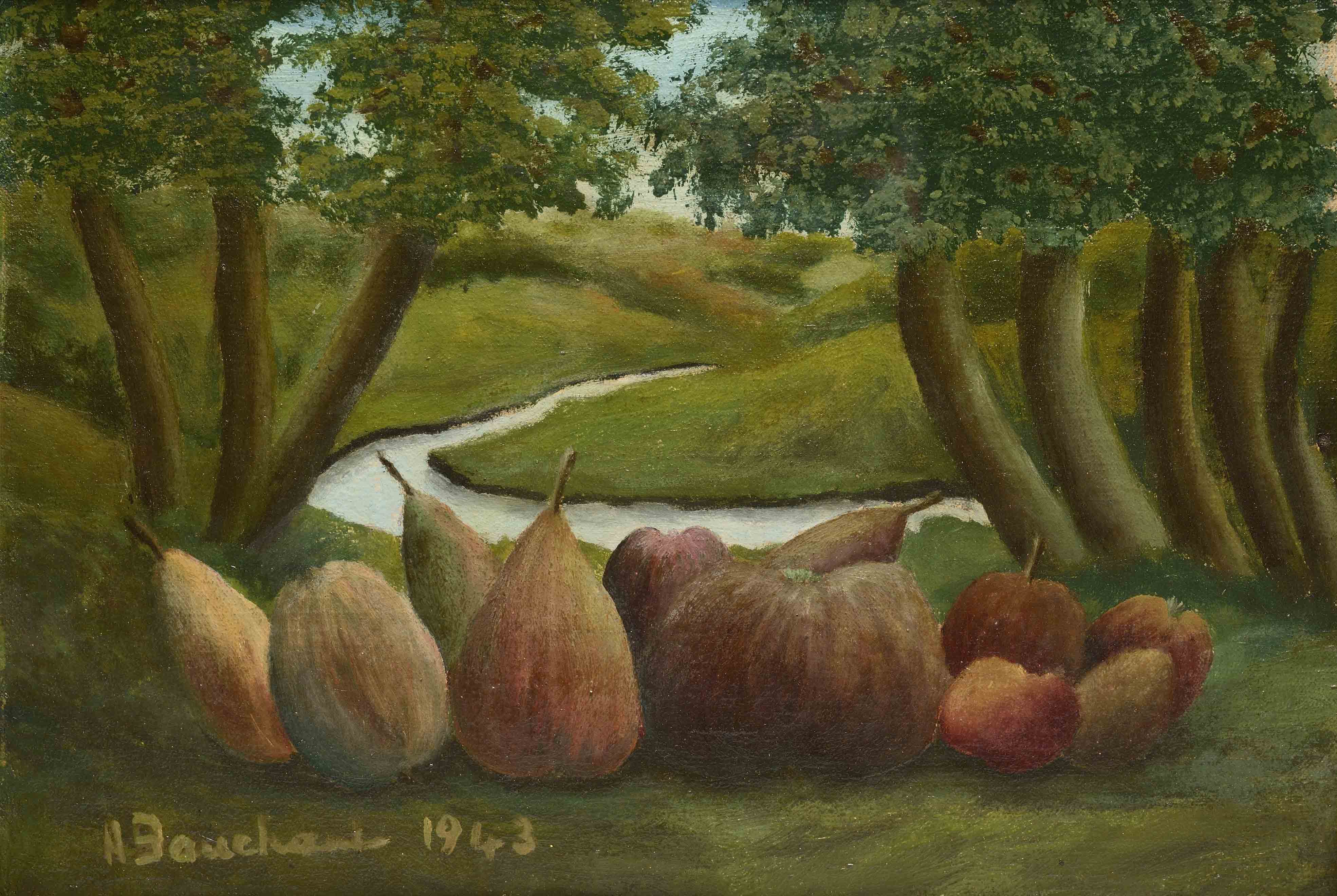
Fruits dans un paysage, 1943
Huile sur carton toilé
25,5 x 35,5 cm
